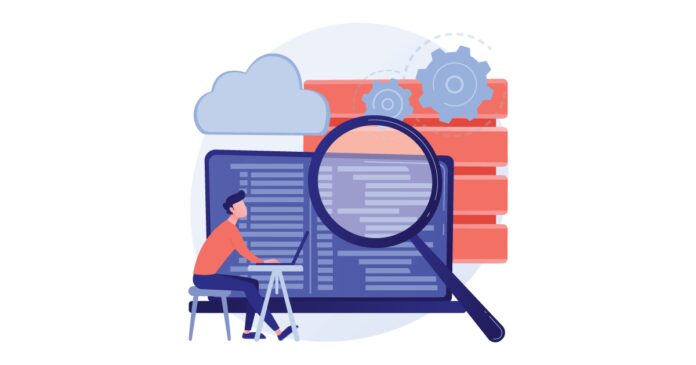Because we rely on the internet, things like larger-than-life enterprise networks and cloud computing have emerged. Together with the digital revolution, these developments have created new jobs that did not exist five or ten years ago.
People aiming to take advantage of these systems and exploit loopholes constantly uncover vulnerabilities as the internet grows. Unfortunately, people attempting to obstruct their progress are right alongside them. Things like network breaches and cyber-attacks make network and cybersecurity necessary for organizations.
Both Cyber security and network security are subcategories of information security to prevent unauthorized access to systems. Here’s what both industries include and how they differ.
Cyber Security

Cyber Security is a subset of Information Security that seeks to prevent unwanted access to our systems. This domain contains defenses against hostile cyber-attacks from the outside. Most of the time, Cyber Security is concerned with all the threats that an external attacker could offer to the application system.
The cybersecurity professional’s sole responsibility is to defend and secure the system. Therefore, they must be experts in all threats’ recovery, reaction, and detection. To more effectively detect flaws in their approach, some cybersecurity professionals are also ethical hackers for their companies.
Network Security

Cybersecurity includes network security. This subcategory consists of all the business strategies a company employs to protect its computer network and data, primarily against internal threats. These safeguards are implemented by businesses utilizing hardware and software solutions. Network security aims to improve the confidentiality and accessibility of data and networks. Organizations that handle a lot of data have a lot of methods to protect themselves from internal cyber-attacks.
Because they have a more proactive role in utilizing resources to prevent an attack, network security experts adopt more offensive actions. These individuals focus on defending the IT infrastructure of an organization.
What is the Difference between Network Security and Cyber Security?
It’s tough to tell the difference between network security and cyber security because both are concerned with protecting hardware, information systems, and sensitive data.
Cyber security is a system that protects a company’s device and server data. In other words, it serves as an extra layer of defense against cyber criminals.
On the other hand, Network Security is a feature that protects data while it travels through and around an organization’s network. As a result, it protects firm data from nefarious employees who are not authorized to view specific sensitive information.
Cyber security aims to protect data on network devices and servers from all types of cyber-attacks so that the data is not misused. On the other hand, network security is a subset of cyber security. It is a process to protect user accounts and data from unauthorized access and damage.
Tools4ever offers enhanced network security tools for protecting your data, user accounts, and systems. Visit their website tools4ever.com to learn more about Identity and Access Management solutions.
Tips to Secure Your Data with Identity and Access Management Solutions
IAM is Identity and Access Management, which refers to the framework formed for the policies, technologies, and business processes to facilitate the management of digital and electronic identities. IAM solutions can help organizations control user access to critical information. For example, it can enable each organization’s employee to securely log in to the particular app without an administrator ID.
In simple language, it is a collective term that covers processes, policies, and products used to control user access within an organization. But what can I do with an IAM?
Regularly Audit User Accounts

The account here is not only referred to the individual accounts but also the joint or corporate accounts. Therefore, it is highly recommended to audit them regularly for any suspicious activity.
Add a Layer of User Authentication.
Adding an extra layer of protection lets, you send a unique verification code or push notification other than just entering the username and password. The primary benefit of this authentication is that only the user with the registered phone number or mail id can access that account.
Ensure Revokable User Access
In one survey, 57% of the employees either alter or delete the company’s information after leaving the organization. This needs to be stopped. So, revoking the access with a single click is the key through which the departing employees cannot misuse the enterprise data.
User Access Control

There are many accesses to certain employees which can be controlled through IAM. They are just a few exports, shares, or import files on their account. It can help companies remove the high-risk features and enhance their security to a high level. Read more about it here.
Balance Trust and Risk Factors
There is a need to enforce specific policies that control web applications without affecting user experiences and productivity. For example, clear access can be restricted to web applications by restricting users from operating the trusted locations or devices.
Frequently Change All Your Crucial Passwords

It is a mandatory step for every organization to change the passwords associated with the crucial ids regularly. This is to ensure that suspicious hackers do not steal your password. Enforcing a password policy can be a significant step towards your network safety. Things like minimum password length, not using dictionary words as passwords, using upper and lower-case letters, et cetera, should be implemented.
Centralize Your System
Centralizing your system is to ensure transparency among employees about what to access and what to not access. In addition, as the number of devices inside an organization grows, it is crucial to have a firm track of all these assets. For this, IAM should be implemented.
Bottom line
The above tips are vital to let your organization run smoothly and seamlessly in the most secure network possible. In addition, it ensures the security of all the critical data and information within the organization. A bonus tip is permanently removing unused and illicit accounts that are no longer in use from ex-employees. Just follow the steps mentioned above, and you are good to go!





